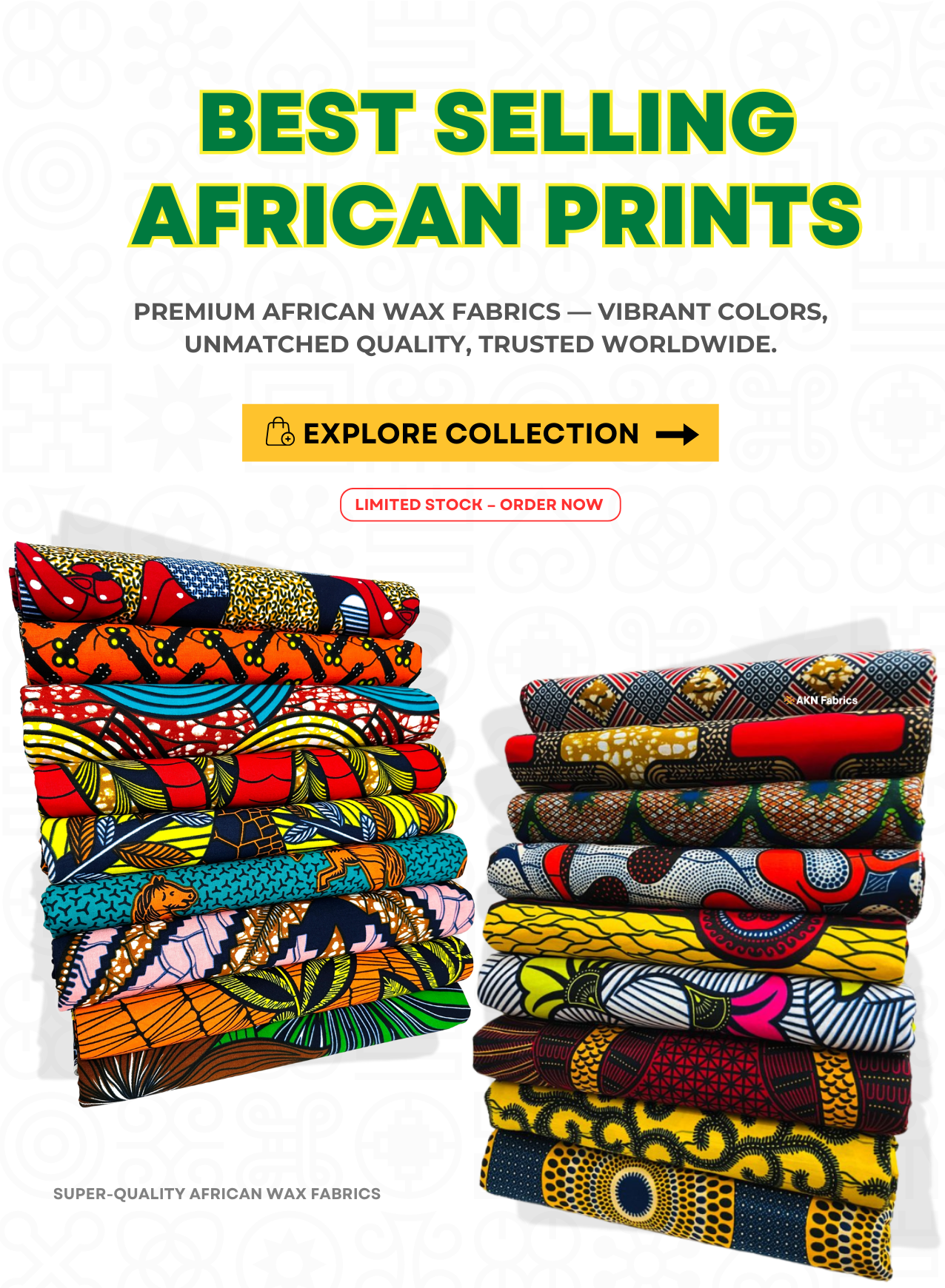If you’ve ever come across those earthy-toned textiles covered with bold tribal patterns, you’ve likely seen Mud Cloth, also known as Bogolanfini. Originating from Mali, West Africa, this ancient fabric is more than just a piece of cloth — it’s a story woven through culture, tradition, and art.
Today, mud cloth fabrics have found their place in both traditional and modern design — from fashion to home décor, they carry a rustic charm that speaks of heritage and craftsmanship.
This guide explores what mud cloth fabrics are, and the many creative ways they are used around the world today.
What Is Mud Cloth Fabric?
Mud cloth fabric, or Bogolanfini, is a handwoven cotton textile dyed with fermented mud and plant-based extracts. The process is entirely organic and labor-intensive, resulting in unique, hand-drawn patterns that carry symbolic meanings.
Traditionally, the base cloth is soaked in a solution made from leaves, then painted with river mud rich in iron. The fabric is later washed, revealing striking black, brown, and white geometric designs. No two mud cloths are ever identical — each piece is a one-of-a-kind work of art.
The Symbolism Behind Mud Cloth
In Malian tradition, every symbol and pattern on a mud cloth carries meaning. Historically, these designs were used to tell stories, mark status, or offer protection. For example:
- Triangles and dots often represent family or fertility.
- Zigzags may symbolize journeys or struggles.
- Lines and grids can signify community or order.
Even today, artisans continue to pass down these patterns, preserving a cultural language that’s centuries old.
The Growing Popularity of Mud Cloth Fabrics
Once worn mainly by the Bambara people of Mali, mud cloth has now captured global attention. Designers and interior stylists use it for its organic textures and minimal earthy aesthetic.
Its natural tones — ranging from warm beige and cream to deep black — blend seamlessly with modern, rustic, or bohemian styles. As sustainability becomes a design priority, mud cloth’s handmade authenticity has made it a favorite among eco-conscious creators.
Top Uses of Mud Cloth Fabrics
Let’s explore where this versatile fabric shines the most:
1. Fashion and Apparel
Mud cloth is widely used in clothing design for its artistic patterns and bold personality.
-
Jackets, skirts, shirts, and trousers — especially in African-inspired fashion collections.
-
Headwraps, shawls, and scarves — adding a touch of cultural statement.
-
Footwear and accessories — like handbags or sneakers covered with mud cloth prints.
Designers often blend traditional mud cloth with modern silhouettes, creating timeless pieces that bridge heritage and contemporary fashion.
2. Home Décor and Interiors
Mud cloth fabric has become a must-have element in modern boho and rustic décor. Its raw, hand-dyed patterns make every piece feel grounded and natural.
Common décor uses include:
-
Cushion covers and throws – Instantly elevate your sofa or bed with African-inspired textures.
-
Upholstery and furniture accents – Ideal for chairs, stools, or headboards.
-
Curtains and wall hangings – Create warm, earthy focal points in minimalist interiors.
-
Table runners or placemats – Add handcrafted charm to dining setups.
Its neutral tones fit effortlessly with wooden furniture, woven baskets, and indoor plants.
3. Art and Craft Projects
For creatives, mud cloth offers endless potential. It’s often used for:
-
Framed fabric art or wall panels
-
Handmade journals, book covers, and gift wraps
-
Patchwork quilting or DIY tote bags
Each cut piece retains its original hand-painted detail, making every craft item feel authentic and exclusive.
4. Cultural and Ceremonial Wear
In many African cultures, mud cloth garments are still worn during weddings, naming ceremonies, and traditional festivals. The symbolic patterns tell personal or spiritual stories, often representing strength, purity, or connection to ancestors.
Even modern brides sometimes incorporate mud cloth elements into their outfits or decor to honor their roots.
5. Contemporary Design and High Fashion
Luxury designers and stylists have also embraced mud cloth in global fashion runways. You’ll often find its patterns printed or reimagined in high-end collections, merging African artistry with global aesthetics.
From designer handbags to runway jackets, Bogolanfini-inspired designs celebrate cultural heritage while appealing to a modern audience.
How to Care for Mud Cloth Fabric
Because mud cloth is hand-dyed with natural materials, it needs gentle care to preserve its color and texture:
-
Hand wash only in cold water using mild detergent.
-
Avoid harsh chemicals or bleach.
-
Do not wring or twist; instead, press gently to remove water.
-
Air dry in shade, as direct sunlight may fade the dyes.
-
Iron on low heat on the reverse side if necessary.
Proper care ensures your mud cloth retains its authentic look for years.
Where to Use Mud Cloth in Modern Homes
If you’re redecorating or looking for authentic textiles, consider these styling ideas:
-
A mud cloth throw blanket over a neutral-toned sofa.
-
Framed mud cloth panels as cultural wall art.
-
Mud cloth cushions on wooden or rattan furniture for a cozy, organic vibe.
-
Boho-style bedding using black-and-white mud cloth patterns for contrast.
The simplicity of its geometric motifs makes it blend beautifully with minimalist, Scandinavian, or rustic interiors.
Why Mud Cloth Is More Than Just Fabric
Beyond its uses, mud cloth is a living piece of cultural storytelling. Every brushstroke and pattern carries generations of wisdom, creativity, and identity. In a world of mass production, it stands as a reminder of the beauty of slow, intentional craftsmanship.
Owning or wearing mud cloth isn’t just about style — it’s about honoring history, tradition, and the people who keep this ancient art alive.
Key Takeaways
-
Mud cloth fabric is a handwoven, naturally dyed textile from Mali known for its unique tribal designs.
-
It’s widely used in fashion, home décor, and art, symbolizing authenticity and heritage.
-
Its eco-friendly and handcrafted nature makes it a timeless favorite in modern sustainable design.



